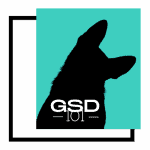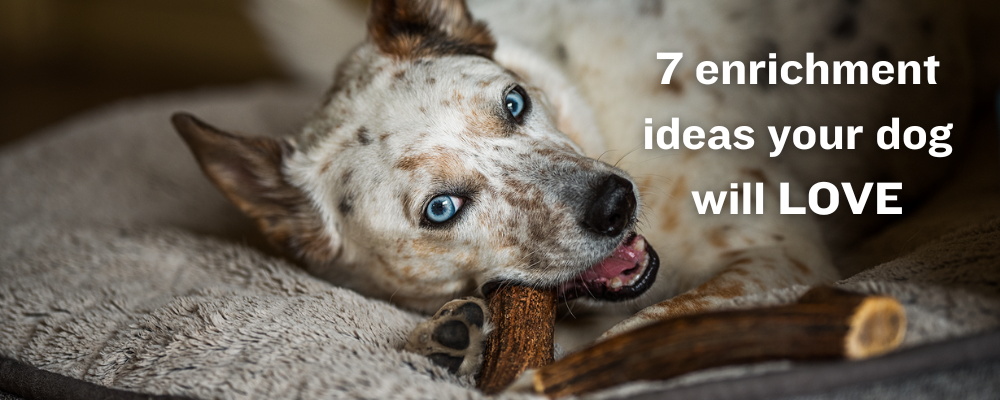Running with your German Shepherd is a perfect way to channel his energy on a regular basis. Before your dog starts to join your marathon training sessions, there are some important details to consider.
Being a herding breed, German Shepherds can enjoy any type of running once they reach the age of 18 months when they have fully grown physically. Nonetheless, they will still need time to build up the strength and stamina to run a marathon, with proper training and diet.
With this article, we will help get you started on the right foot and help ensure long-term health and enjoyment for both you and your dog when it comes to running marathons.
Understaing the GSD Trait
Perhaps you are already a runner looking for a training companion to build up your mileage. Or you are just wondering how far your GSD can run in one go.
Rest assured, the German Shepherd Dog is bred for its high level of energy, love for work, and endurance for adverse conditions (especially the working lines), running is one of the best physical exercises you can enjoy with your furry companion.
This breed trait is so versatile and they can excel in many roles they are trained and assigned to, such as guard dog, police dog, military dog, guide dog for the blind, search and rescue dog. That said, can German Shepherds be trained to be marathoners?
Is running good for your German Shepherd?
First thing first, while some dogs take running better than the others, is (long-distance) running good for your German Shepherd?
Adult GSDs on average need 1-2 hours of regular exercise per day. So a nice jog or run will be great if the weather is not too hot (e.g. no more than 75 degrees) for your furry friend.
It is because GSDs have a double coat and they cannot sweat to lower their body temperature. Running in hot temperatures may not be ideal for this breed.
Keep in mind that every dog is different, it will also depend on the training you’ve given them. If you’ve dedicated the time to train for a distance run, then it could be great. A dog that isn’t as well trained could be at risk of injury.
At what age is best to take a GSD for running?
Growth plates are the areas of bones where lengthening and other early bone growth take place. They’re what allows a puppy to grow into full size.
Running too much with your puppy could damage their growth plates, which may cause problems with their legs when they grow. It may also increase their risks of hip or elbow dysplasia or shoulder osteochondrosis.
There are multiple growth plates throughout a dog’s skeleton, and each plate can “close” — stop growing new bone — at a different age.
Depending on the breed, lifestyle and diet, growth plates are usually all closed by about one-year-old in most dogs. For big dogs like German Shepherds, it will not be 18 months old until all of their important growth plates are closed.
Your best bet is to talk to your veterinarian before starting your marathon training with your German Shepherd.
What are the best conditions to take your dog out for running?
Unlike Huskies, German Shepherd might not be able to run for hours under extreme cold weather with heavy snow. Ice melters can cause damage to their paws.
Likewise, their double coat also makes them prone to heat stroke if left running on a hot day. (e.g. over 40 degrees) Hot running surfaces can burn your dog’s paw pads.
Put the back of your palm against the hot surface for 5 seconds — if it’s too hot for you, then it’s too hot for your dog’s paws.
Ideally, you should run with your dog early in the morning or evening when it’s not so hot, or arrange your training schedule to align when climates are a bit cooler. (e.g. 75 degrees or below)
Tuff Mutt Hands-Free Bungee Leash – for Running
The go-to leash for essentially any situation, it works by attaching to a lightweight, reflective waist belt so you can have both your hands back.
This means you can take your dog running, hiking, or even just take a call while out for a stroll. And thanks to the spring factor of the bungee leash, if your dog takes off after a squirrel, it will help to absorb some of the shock. And for crowded situations, the built-in control handles are right there to grab so you can keep your pooch close.

- Hands-free bungee leash features a 48-inch lead that extends up to 60 inches, and is designed to absorb shock.
- Leash attaches to the included adjustable waist belt, which features a heavy-duty clip and comfortable fit.
- Slide belt clip allows your dog to move from side to side without tangles or tripping.
- Two control handles can be easily grabbed to help keep your dog close in crowded areas.
- Perfect for running, hiking, or using the phone while walking your dog. Three seams of bright, reflective stitching give nighttime visibility.
How to train your GSD for long runs?
Just like you wouldn’t take your new friend out for a marathon on their first run, you should not start running long distances with your dog without any training. Here are some resources to get you started:
1. Work on obedience commands
This is the prerequisite even before the running itself. It is very important for your dog’s safety and the safety of others.
When you take your dog out, there will be a lot of distractions like other runners, bikers, dogs, squirrels, or birds. Depending on how much socialization your dog was exposed to in his early years, his prey drive may kick in and start chasing.
Basic obedience commands like “sit” and “stay” are key in making your runs go smoothly and safely. For example, if you see another runner coming you should be able to cue your dog to stop running and sit to let them pass.
Train your pup to focus on you and only you as you train so she does not become distracted. Call your dog’s name in a delighted tone to get his attention if you see an approaching dog or small animal.
2. Start with a 5K training plan first
Just because they have a lot of energy does not mean you can take your GSD off for 26.2 miles right out of the gate.
To begin, introduce your running routine to your dog by alternating walking and running in the same session. This 6-week Dog 5K Training Plan from Kurgo is very easy to follow and it enables you to gradually get your dog running.
After all, 5k may take around 40-45 minutes to finish and it’s a good place to start with.

Plan out your week for four days of training and three days of rest in between them. (You still have to do your regular exercise with your GSD on the rest days.)
In week 1, start with 1 mile of the walk and gradually introduce 1 minute of running by alternating it between the 1-2 minutes of walks.
As the weeks progress, you will add more running time while still building in walk breaks until your dog is comfortable running without stopping.
Take note of whether they’re panting a lot, limping, or slowing down. Pause for a water break every 10-15 minutes.
3. Build up the distant over time
For long-distance running, you will need to be build up the mileage over time as well. Once your dog is comfortable with running for 5k for at least 1-2 months, you can step up your game for 10k or half marathon training.
The average time for a human to finish a full marathon is 4 hours and 21 minutes. Similar goes for dogs as well. According to the 2020 result of 4 Paws Marathon, an organizer for a dog marathon from New Zealand, male dogs finished at 4 hours 4 minutes and female at 5 hours 16 minutes.
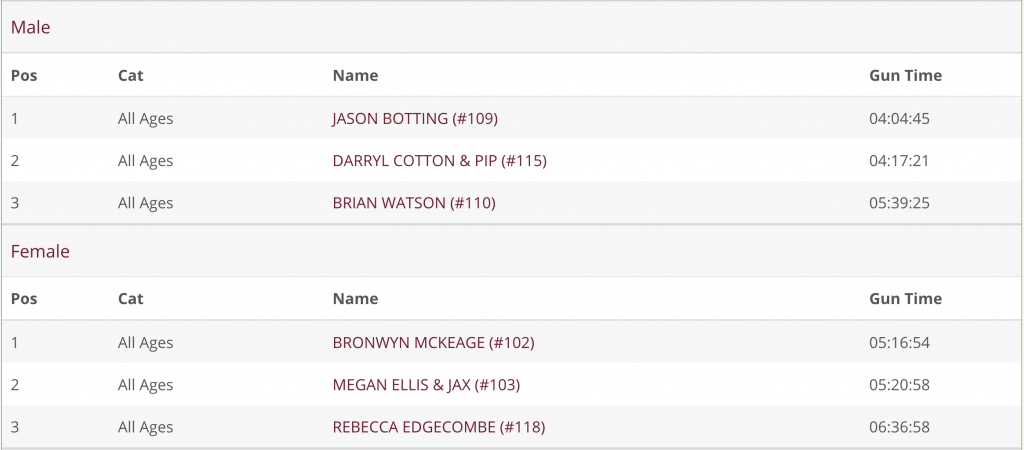
No matter how hyper-active your GSD maybe, he will need to build up his strength and stamina before diving right into a marathon, just as you won’t do it for humans. 4 Paw Marathon also have a 13-weeks training plan for a full and half marathon that you might like to see if it works for you and your dog.
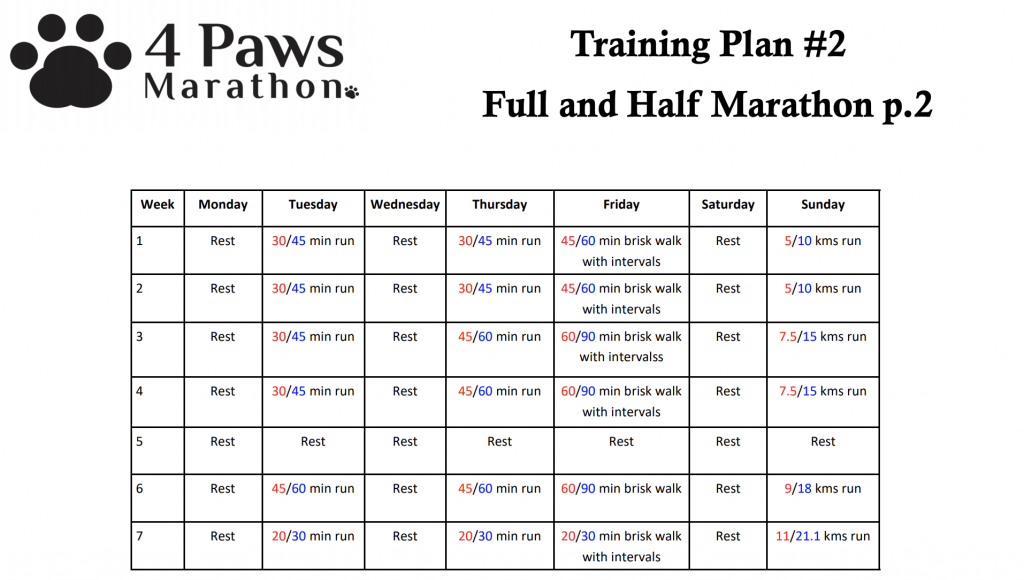
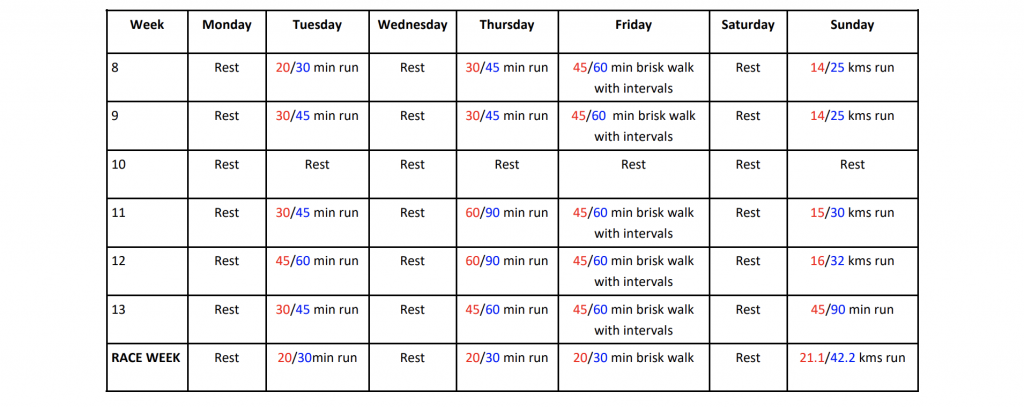
According to runnersworld.com, running more than 2 marathons a year is pretty hard on the body and mind. And it will increase your risk for injury and slower times are usually the end result. Keep that in mind.
Before running
A good warm-up for a dog can go a long way. Start walking briskly for the first 5 minutes of your run time and then work up your pace.
After running
After finishing your run, do not come to a sudden halt. Instead, walk for at least 5-10 minutes to allow their muscles to cool down. As you may also do some stretch for your leg muscle as well.
Nutrition Need for marathon training
As the distance and duration of exercise increase, dogs use fat as an aerobic fuel source…Therefore, fat likely has the most profound effect on increasing stamina in dogs.
This difference in energy density between fuels means that working dogs can be fed additional calories by increasing fat in the diet rather than the amount of food given.
Source: todaysveterinarypractice.com (TVC)
How many calories does an active dog need per day?
By using the Homemade Dog Food Calorie Calculator from The Bark, an ”active” dog of 80 lbs, like a German Shepherd will need to consume 2073 kcal per day.
You may use the calculator to come up with the exact kcal needed for your dog’s weight and activity level.
How much fat does an dog need for marathon training?
Diets containing a minimum of 90 g protein, 60 g fat, and 25 g carbohydrate per 1000 kcal are recommended (for long-distance running for dogs) based on current research.
Please see “Suggested Target Macronutrient Profiles for Performance Dogs” from TVC.
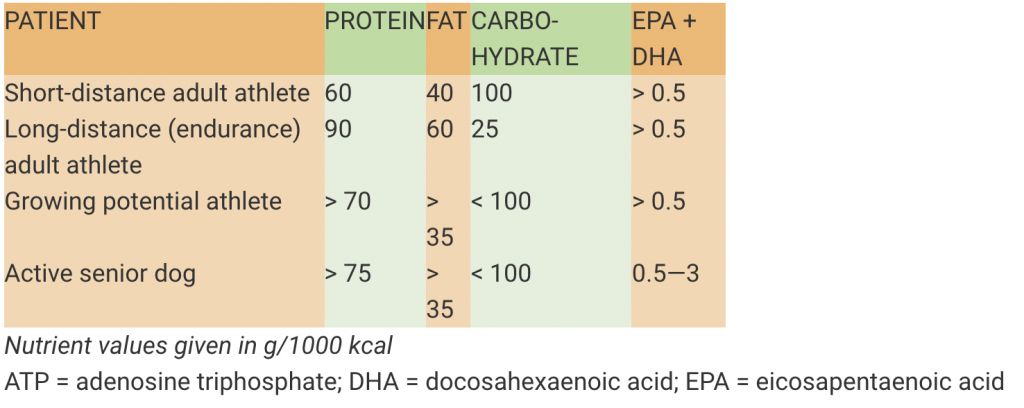
Therefore, an 80 lbs German Shepherd will need to have at least 120 grams of fat in his diet in a day, without increasing the amount of food intake.
Again, you can use the Quick Dog Meal Calculator from The Bark to work out the amount of fat contains in different kinds of food (e.g. beef, chicken, pork, etc.) for your reference.

Final Note
Some dogs will be able to fly out of the gate, while others may need to take it slowly and learn what’s expected of them while out for a run. It’s important to observe your dog before and after the run to decide whether you are doing it at the pace your dog can take. These are the question that may give you a better clue to plan for your next training with your four-legged friend:
- Is my dog enjoying the run? If your dog pulls the opposite way on its leash or refuses to move forward, he might not be digging the training session.
- Are they excited to go out running once you are getting the gear ready?
- Are they eating and sleeping normally?
If the answer to any of these questions is yes, you are on track for the next marathon race with your dog.
